The Independent's journalism is supported by our readers. When you purchase through links on our site, we may earn commission. Why trust us?
A complete guide to skincare acids, from AHAs to BHAs
Do you know the difference between your glycolic acid and lactic acid?
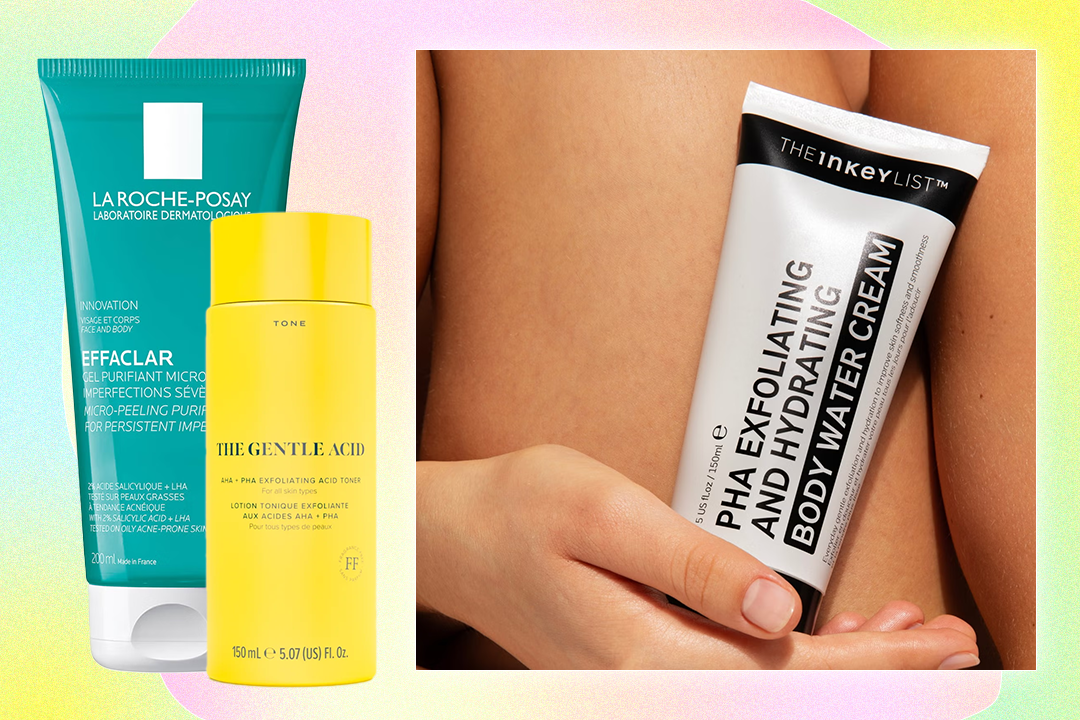
Your support helps us to tell the story
From reproductive rights to climate change to Big Tech, The Independent is on the ground when the story is developing. Whether it's investigating the financials of Elon Musk's pro-Trump PAC or producing our latest documentary, 'The A Word', which shines a light on the American women fighting for reproductive rights, we know how important it is to parse out the facts from the messaging.
At such a critical moment in US history, we need reporters on the ground. Your donation allows us to keep sending journalists to speak to both sides of the story.
The Independent is trusted by Americans across the entire political spectrum. And unlike many other quality news outlets, we choose not to lock Americans out of our reporting and analysis with paywalls. We believe quality journalism should be available to everyone, paid for by those who can afford it.
Your support makes all the difference.Skincare acids are a hot topic. While they may sound scary, they’re some of the hardest-working, multi-tasking ingredients you can have in your routine. From tackling acne to treating dehydration, balancing oiliness or improving the appearance of fine lines and wrinkles, acids are one of the handiest tools at your disposal.
However, understanding the difference between them all, how they work and what skin types they’re suitable for, is easier said than done. That’s why we’ve curated an in-depth guide to give you the complete skincare acids breakdown, with the help of experts.
We’ve got all the intel you need from three consultant dermatologists: Dr Derrick Phillips at OneWelbeck, Dr Zainab Laftah at HCA The Shard and Dr Jinah Yoo from Maylin x Dr Jinah Yoo Dermatology clinic.
With the help of their specialist skincare knowledge, we’ve got you covered on all things skincare acid, including the role, ability and efficacy, and how they can address your biggest skin concerns, whether that’s dryness, congestion, breakouts, dullness, wrinkles or fine lines. Think of this as your go-to guide next time an ingredient list has you stumped.
What do skincare acids do?
Acids in skincare typically refer to chemical exfoliants, which are liquid formulas applied to the skin. They can be found in cleansers, toners, serums, moisturisers and even eye creams.
“Chemical exfoliants have a number of skin benefits,” says Dr Laftah. “They can help exfoliate the skin cells in stratum corneum (top layer of the skin) to give an even healthy skin glow. They can also break the bonds in blocked pores to unclog pores and reduce acne breakouts.”
There are many different types of acids in skincare, which typically fall into three main categories, alpha hydroxy acids (AHAs), beta hydroxy acids (BHAs) and polyhydroxy acids (PHAs), with varying benefits.
“For dry or sensitive skin, a PHA would be more suitable at helping increase cell turnover without causing skin irritation. Combination or acne-prone skin often can tolerate stronger chemical exfoliants like AHAs and BHAs, both of which penetrate the skin deeper than a PHA,” explains Dr Laftah.
How to apply acids in your skincare routine
If you’re new to using acids in your skincare routine, the best way to start is to take a slow and steady approach. Over-exfoliating can damage your skin barrier and risk inflammation. Dr Laftah advises trying a low concentration – skincare acids are often labelled with a concentration percentage – twice a week for two weeks then gradually build up every fortnight.
A common mistake people make is to use too strong a concentration, or apply acids every day, which can lead to irritant contact dermatitis, she explains. This can present as dryness, redness, burning or stinging, so always be careful when introducing them to your routine.
“It’s also important to remember not to use too many exfoliating actives at one time as this can compromise the skin barrier leading to skin inflammation and irritation,” advises Dr Laftah.
Alpha-hydroxy-acids (AHAs)
AHAs are water-soluble acids, which simply means they exfoliate on the surface of the skin to varying degrees.
Glycolic acid is the most powerful AHA and is commonly found in skincare products thanks to its ability to remove the outermost layer of dead skin cells, thus leaving your complexion brighter, radiant and more even, as well as reducing the appearance of fine lines by stimulating collagen production.
In our dedicated guide to glycolic acid, beauty writer Twiggy Jalloh spoke to medical consultant and founder of Adonia Medical Clinic, Dr Ifeoma Ejikeme who revealed it’s suitable for most skin types, particularly oily skin, but advised those with dry or sensitive skin to opt for lower concentrations and for sensitive skin to leave it out of their routine altogether to avoid irritation.
Our top-rated glycolic acid is The Ordinary glycolic acid 7% exfoliating toner (£7.70, Lookfantastic.com), and not just for its affordable price tag. In our beauty writer’s review, they were left impressed with the improvement it made after a month of consistent use: “I started to notice that I wasn’t thinking about my skin as much. I noticed fewer blemishes, smoother texture and an overall brighter appearance became the norm.”
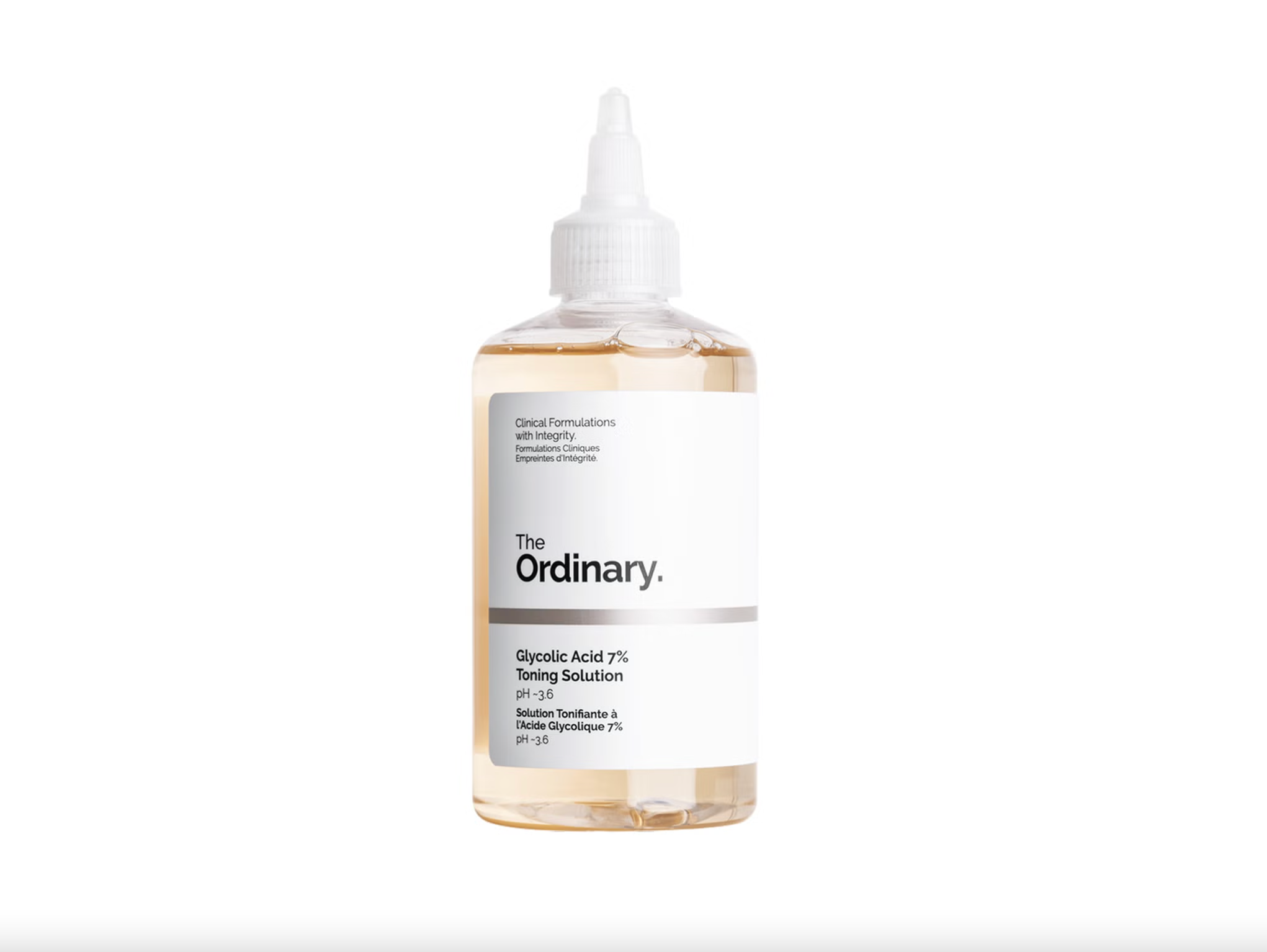
Other common AHAs include lactic and mandelic acids – two of which are best suited to sensitive complexions and are a great option to introduce into your routine if you’re new to acids. Skin Rocks the gentle acid (£49, Skinrocks.com) incorporates both in its gentle formula, hence the name, and was awarded five stars by beauty editor Lucy Partington in her review.
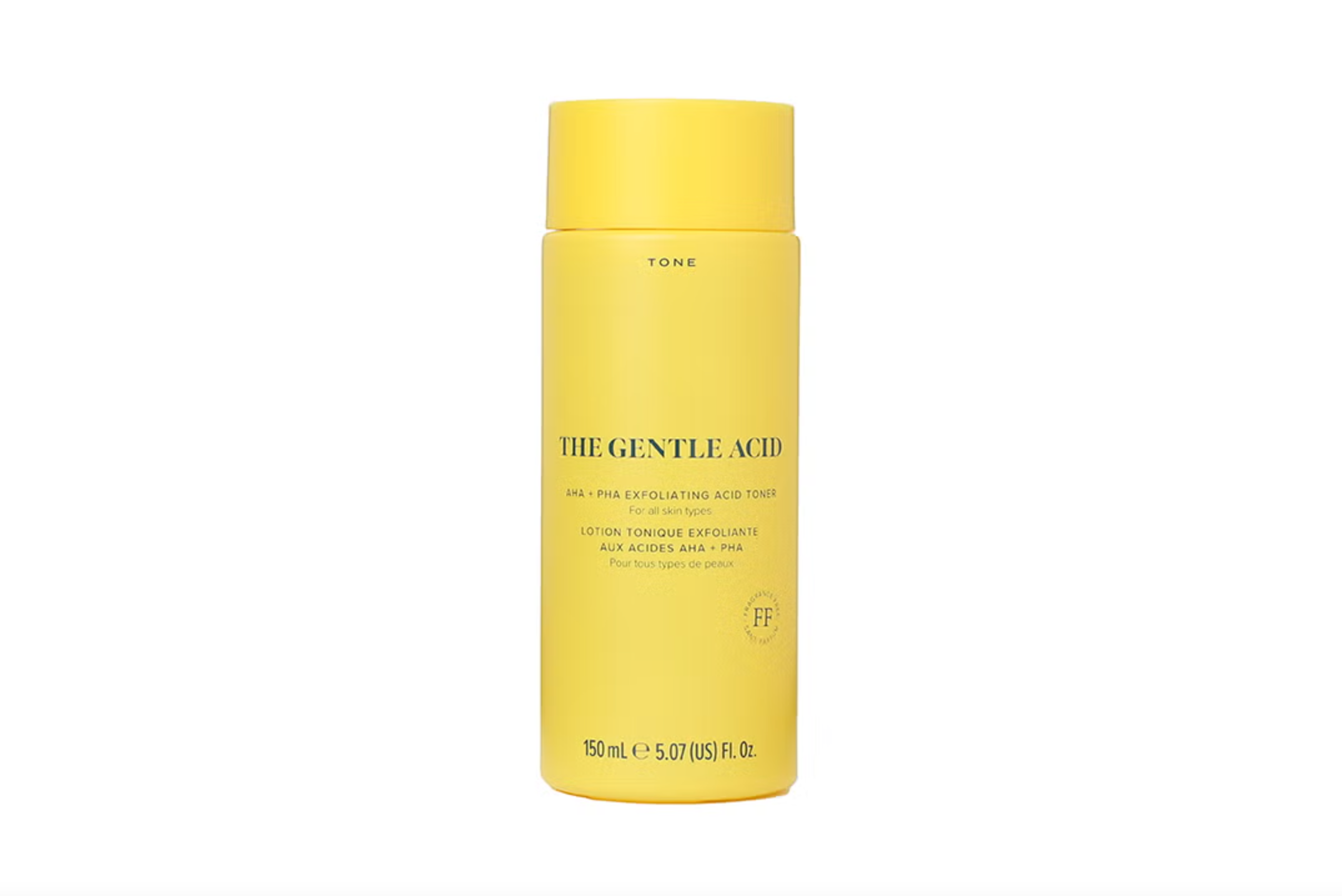
“Formulated with a blend of lactic and mandelic acid, alongside gluconolactone (a polyhydroxy acid) to help with exfoliation and improved skin texture, it’s a great entry point for anybody new to acids. We loved that it sloughs away dead skin cells and imparts a natural-looking glow without causing dryness,” noted Partington.
Beta-hydroxy-acids (BHAs)
On the other hand, BHAs are oil soluble and can exfoliate inside clogged pores to decongest skin and reduce breakouts, making it a popular choice for oily skin types.
The most common BHA is salicylic acid, which is also a favourite of Dr Phillips for treating blackheads. “Originally derived from the bark of certain plants – such as white willow and wintergreen leaf – salicylic acid works by helping to remove dead cells from the top layer of the skin, promoting renewal and unclogging the pores, reducing blackhead and improving the overall skin complexion,” he says.
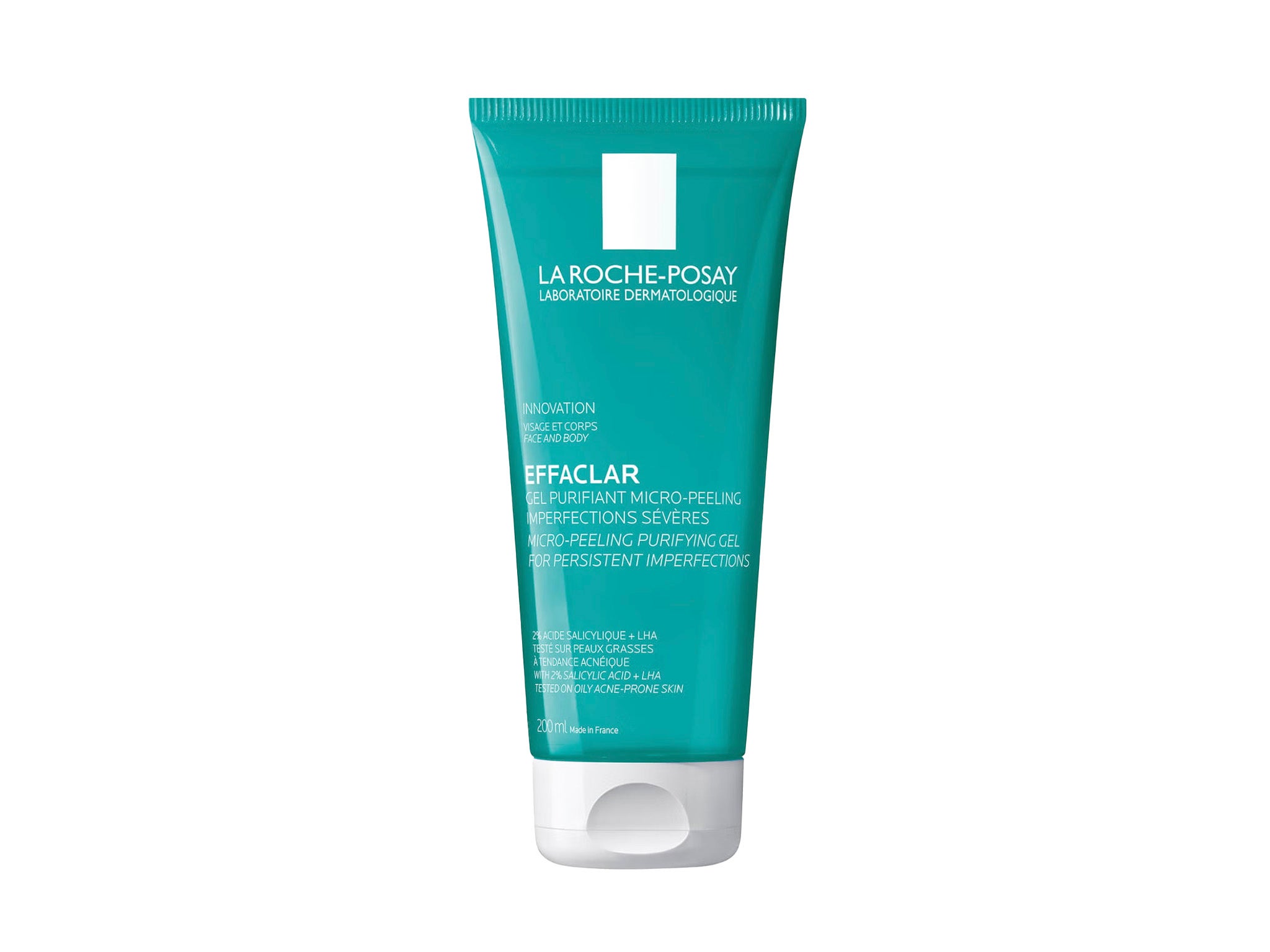
According to the consultant dermatologist, it breaks down the material that clogs pores and he advises using a cleanser that contains salicylic acid, which will remove excess sebum, dirt, oil, and makeup that clogs your pores and causes blackheads. “Start by using two to three times a week to help build up your skin’s tolerance and reduce the chance of redness and skin dryness.
We love the La Roche-Posay effaclar micro-peeling purifying gel wash (£17, Lookfantastic.com) – it contains two per cent salicylic acid. It’s safe for use on the face and body, and it lathers well when massaged into damp skin. We love how refreshing it feels first thing in the morning and the gentle formula that doesn’t leave our tester’s oily skin feeling dry, stripped or uncomfortably tight.
Poly-hydroxy-acids (PHAs)
PHAs are antioxidants derived from malt sugar and milk sugar, and provide protection from environmental aggressors such as pollution. Common PHAs include gluconolactone, galactose and lactobionic acid.
In our skincare ingredients glossary guide, Dija Ayodele, aesthetician and founder of the Black Skin Directory and West Room Aesthetics shared that “they have the added benefit of providing very light exfoliation and also hydration to the skin, meaning they are perfect for sensitised skin and helping to strengthen the skin.”
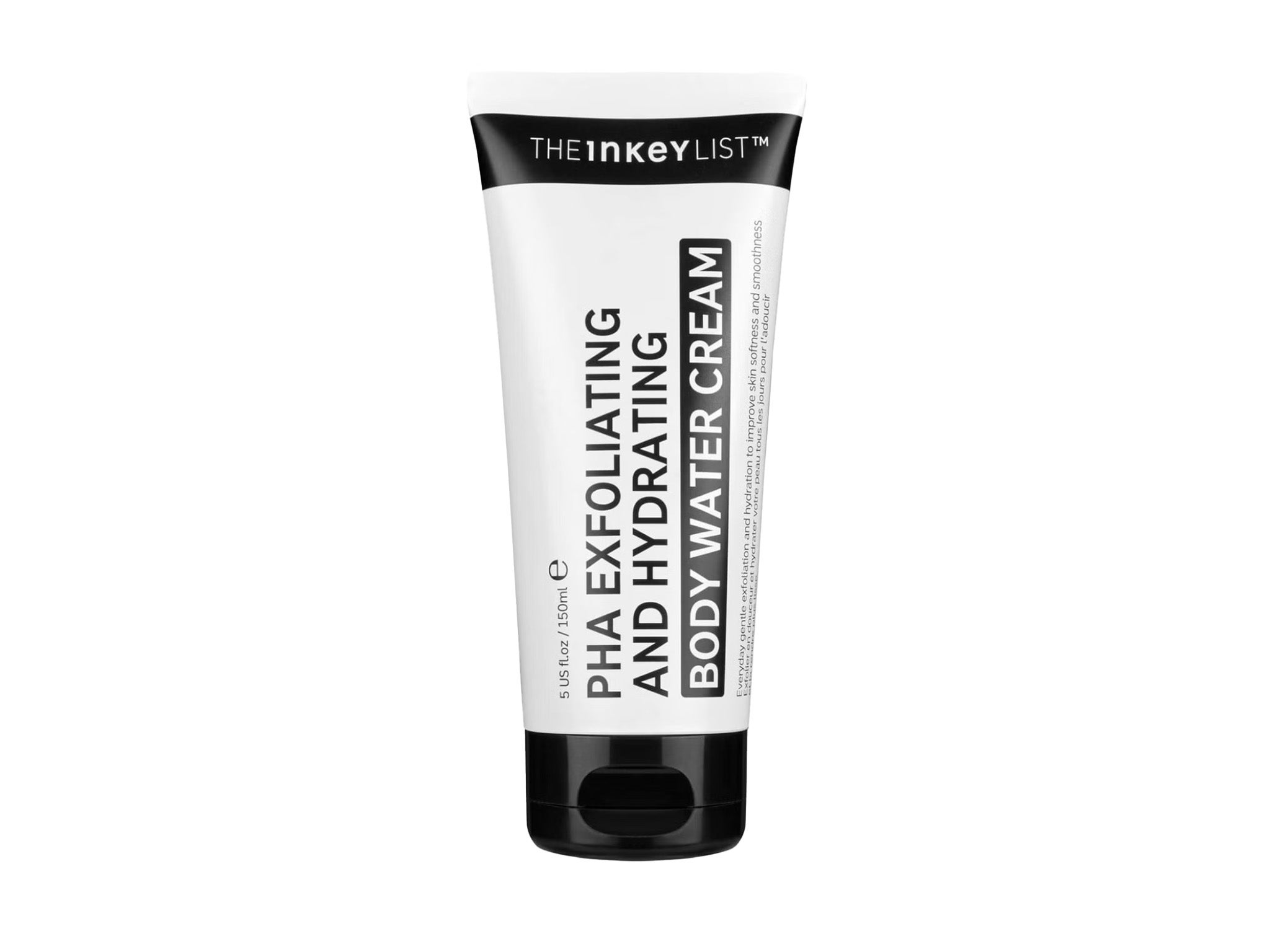
If you’ve yet to try it, we’d recommend The Inkey List PHA exfoliating and hydrating body water cream (£13, Lookfantastic.com), particularly if you struggle with body acne or ingrown hairs. It’s a lightweight creamy texture that absorbs in seconds without leaving your skin feeling sticky or greasy but moisturised enough to keep any dryness at bay.
We think it’s perfect for post-shaving as it makes light work of dry, textured bumps on legs, and has become our go-to treatment for cracked, dry heels.
Retinoic acid and hyaluronic acid
These two commonly seen acids in skincare don’t have the typical exfoliating properties of AHAs, BHAs and PHAs. In fact, hyaluronic acid doesn’t exfoliate the skin at all. Instead, it’s an ingredient naturally produced by our body, but as we age, we produce less.
As Dr Eirini Merika, consultant dermatologist at the Montrose London clinic explained in our guide to hyaluronic acid, it’s a “high molecular weight polysaccharide found in connective tissue”. Within your skincare products, it attracts and retains moisture, giving a plumping, softening effect on the skin, and typically has a gel-like texture.
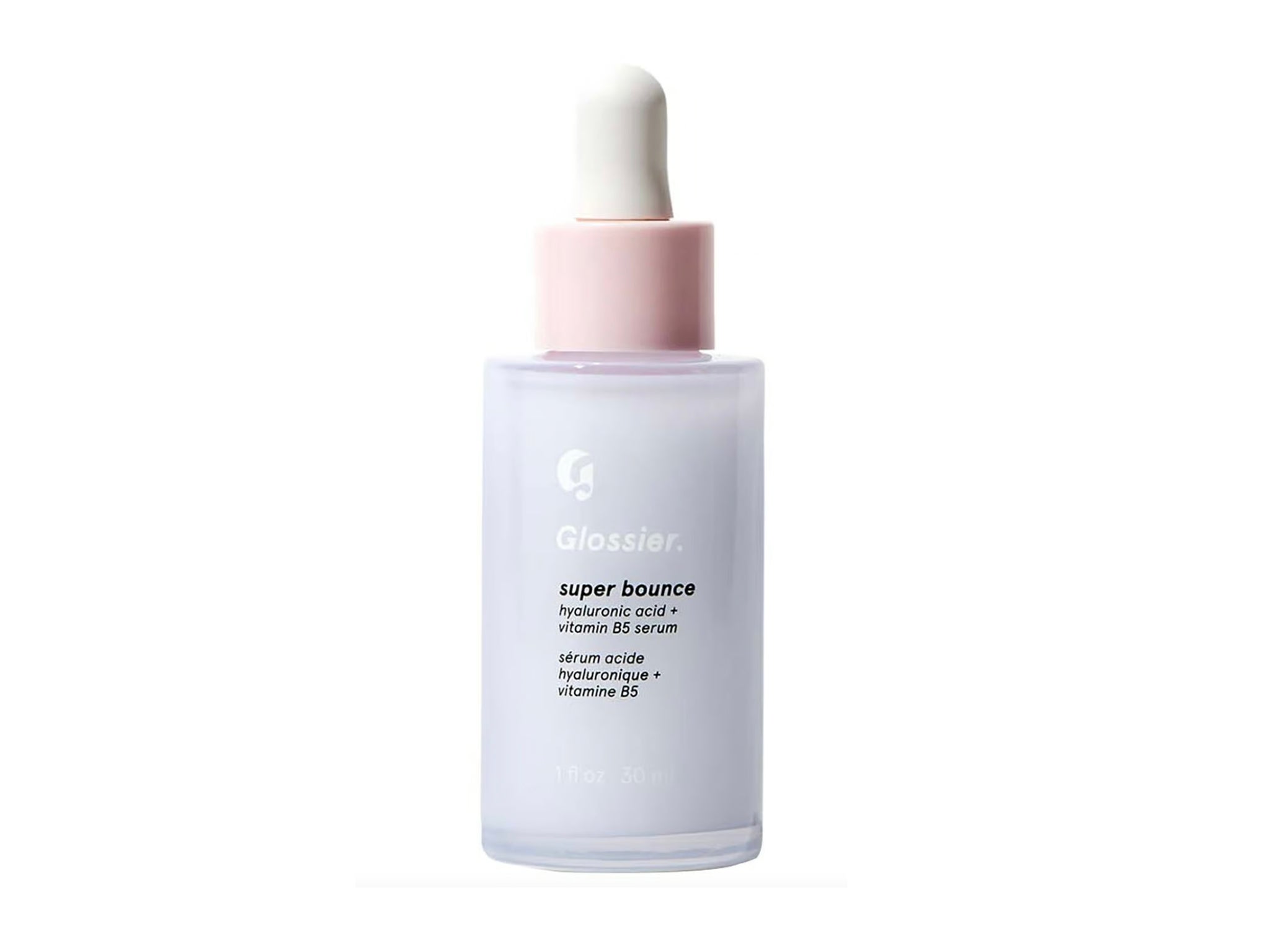
In our guide to the best hyaluronic acid serums, the Glossier super bounce hyaluronic acid + vitamin b5 serum (£32, Glossier.com) took the top spot. “With its soft milky formula, this serum feels luxurious when applied to the skin and is combined with vitamin B5 for lasting moisture. It promises to leave skin feeling smoother and softer in just four weeks but we noticed a difference after two,” praised our beauty expert.
Last but not least is retinol, which is often grouped with skincare acids owing to its ability to stimulate cell turnover and potent anti-ageing properties. It can often be formulated in products containing the acids we’ve discussed above.
Dr Yoo explains why it’s a popular choice in skincare: “There are multiple benefits to using retinol within your routine; it reduces wrinkles and fine lines as it stimulates collagen production which helps to improve skin elasticity and firmness, improves overall skin texture when used regularly, resulting in a smoother, more even skin tone by promoting cell turnover and exfoliation.”
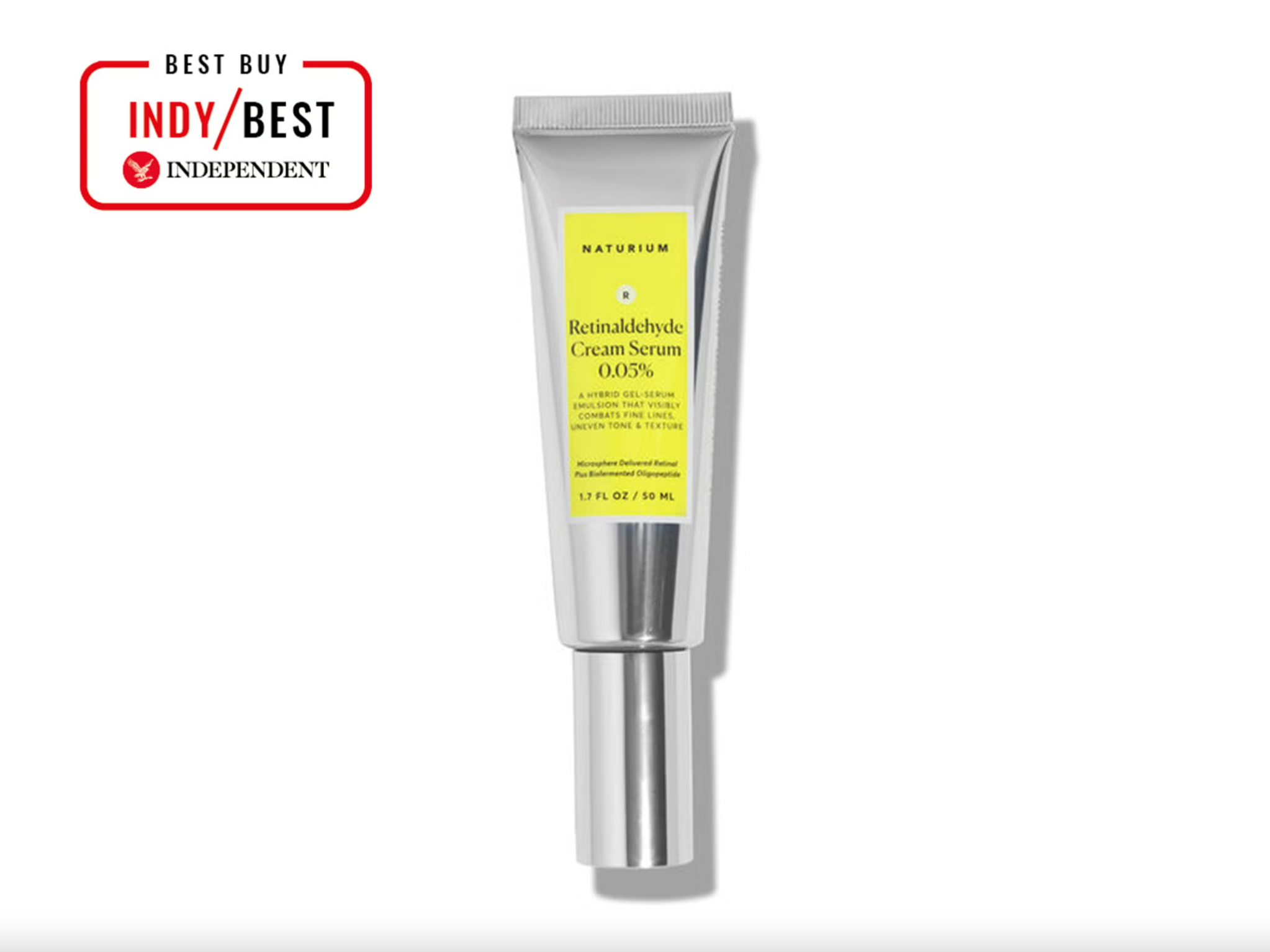
However, it’s important to use it with caution to avoid irritation, as it can be quite potent. In over-the-counter products, retinol is typically available in the UK in concentrations between 0.3 and one per cent. Start with a lower percentage two to three times a week and gradually increase.
“With this in mind, when used correctly, it can even support acne, by unclogging pores, and regulating oil production – leading to fewer breakouts. You will also find after continued use that it fades skin concerns such as dark spots, hyperpigmentation, and other forms of skin discolouration,” says Dr Yoo.
In our guide to the best retinol creams and serums, the Naturium retinaldehyde cream serum (£32, Spacenk.com) came out top. “It’s one of the most affordable retinal formulas available, and we like that it’s also fragrance-free, making it suitable for pretty much all skin types. This cream harnesses the power of retinaldehyde – which is more effective yet more gentle than retinol – to help target fine lines and uneven skin tone and texture.”
Our tester loved the lightweight formula of this cream, and we found that it absorbed quickly and didn’t cause any dryness or irritation, despite using it every night.
Voucher codes
For the latest offers on make-up and more, try the links below:
If you’re looking for more skincare recommendations, read our review of the best cleansers to help you achieve your skincare goals